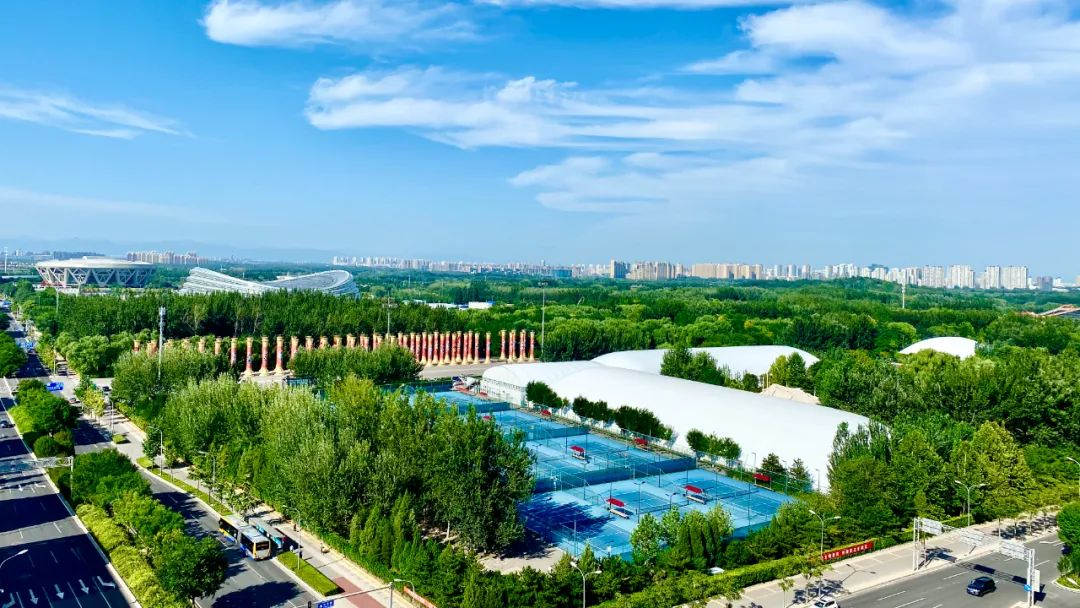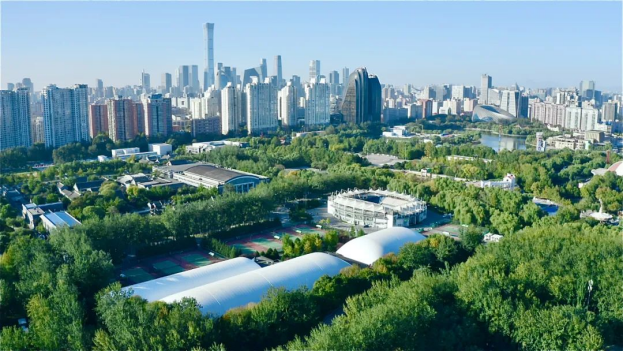Indoor tennis courts provide players with the opportunity to play year-round regardless of the weather conditions outside. However, when it comes to indoor courts, there are two options to consider: traditional indoor tennis courts and tennis domes. While both options offer benefits and drawbacks, the decision on which one to choose largely depends on individual preferences and circumstances.
In this article, we will compare and contrast tennis domes and traditional indoor tennis courts to help you make an informed decision about which one is better suited to your needs.

How Does a Tennis Dome Differ From Traditional Indoor Courts?
A tennis dome, also known as an air-supported structure, is a large inflatable dome made of PVC-coated polyester fabric that covers an outdoor tennis court, creating an indoor environment. The dome is supported by an internal air pressure system that keeps the structure inflated and provides a climate-controlled environment inside. Tennis domes can be set up quickly and provide a cost-effective solution for those who want to play tennis year-round without having to invest in a permanent indoor facility.
On the other hand, there are no beams and columns in the tennis dome, which means it’s a more open venue for sports than a traditional indoor tennis courts.
Furthermore, traditional indoor tennis courts are usually built as permanent structures, typically made of concrete or wood, and enclosed with walls and a roof. These courts are often equipped with heating and cooling systems, lighting, and other amenities to provide a comfortable and convenient playing environment for tennis players. Traditional indoor courts are generally more expensive to build and maintain than tennis domes but offer greater durability and longevity.
Comparison of Tennis Domes and Traditional Indoor Tennis Courts
Several vital factors exist when comparing traditional indoor tennis courts with a crown. For Example:
-
The Cost of Construction and Maintenance
While constructing an indoor court can be costly due to the need for HVAC systems, lighting, and other components, a dome requires minimal investment. In addition, crowns require little to no maintenance beyond regular cleaning and inspections, making them much more cost-friendly over time.
-
Construction Time and Flexibility
Building an indoor court can be lengthy, whereas setting up a dome is much quicker and easier. Furthermore, domes are much more flexible regarding location and design options. You can create the perfect playing environment with a dome if you have the space.
-
Climate Control and Energy Efficiency
Traditional indoor courts require extensive HVAC systems to maintain a comfortable climate, whereas domes rely on natural air and light. This means that the energy costs associated with a dome are much lower than those of an indoor court, making them an excellent choice for those looking to reduce their carbon footprint.
-
The Playing Experience and Player Satisfaction
Finally, there is the playing experience itself. Inflatable sports domes offer players a better lighting system and better air quality than traditional indoor courts due to their enclosed nature, which can prevent dust, pollen, and other allergens from entering.

The Tennis Dome Complex of Beijing Olympic Forest Park from Metaspace
The Tennis Dome Complex of Beijing Olympic Forest Park from Metaspace is an impressive example of a modern-day tennis dome. This complex is designed to provide a comprehensive sports experience for athletes and recreational players alike.
The complex comprises six tennis courts, and this dome is equipped with the latest technology and design, including energy-efficient lighting systems and automated retractable roofs that can open up and close depending on the weather conditions.
Recently, the 13th National Elite School EMBA Tennis Classic was held in this tennis dome complex. This tournament was hosted by the National Elite School EMBA Tennis Federation and organized in cooperation with Peking University’s National Development Institute.

Final Thoughts
In conclusion, when it comes to deciding between tennis domes and traditional indoor tennis courts, there is no one-size-fits-all answer. Both options offer their own unique advantages and disadvantages, and it ultimately comes down to the specific needs and preferences of the players and facility. Tennis domes provide a cost-effective and flexible solution that allows for year-round play, protection from the elements, and customizable playing conditions. On the other hand, traditional indoor tennis courts offer a permanent and more upscale setting, with better ventilation and lighting.
Ultimately, the decision depends on a number of factors, including budget, location, and facility requirements. It’s important to carefully consider all options before making a final decision and to consult with experts in the field who can provide guidance and advice, and Metaspace is here to help; contact us for more information.
